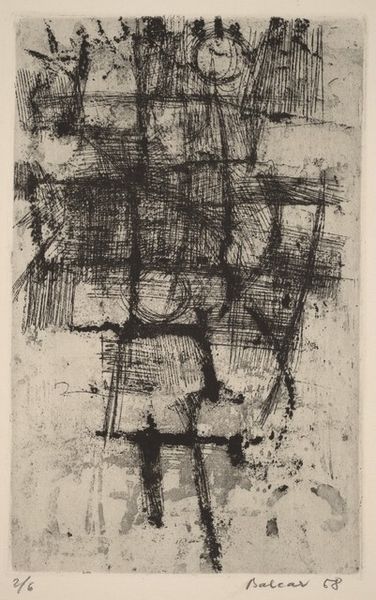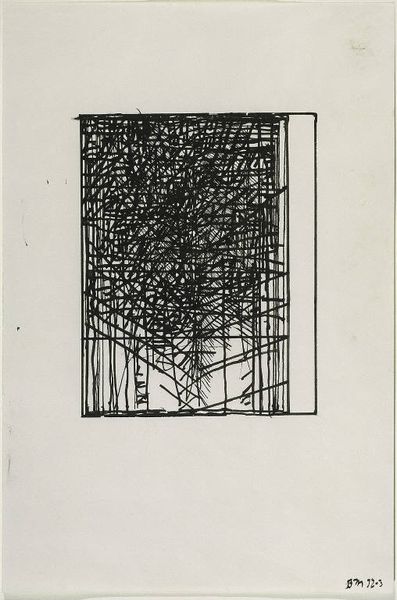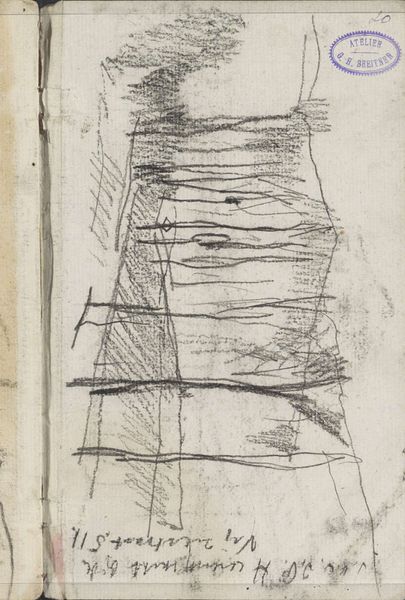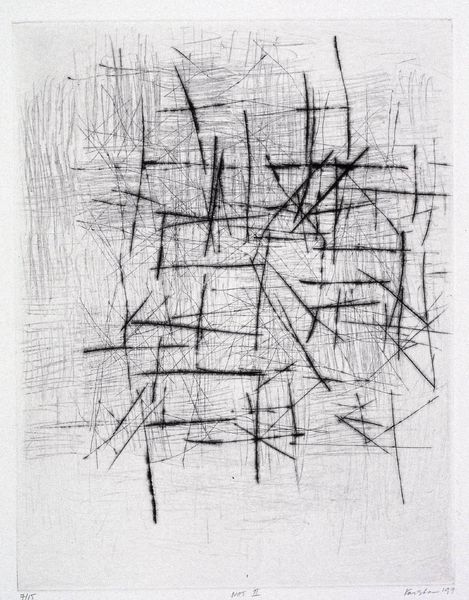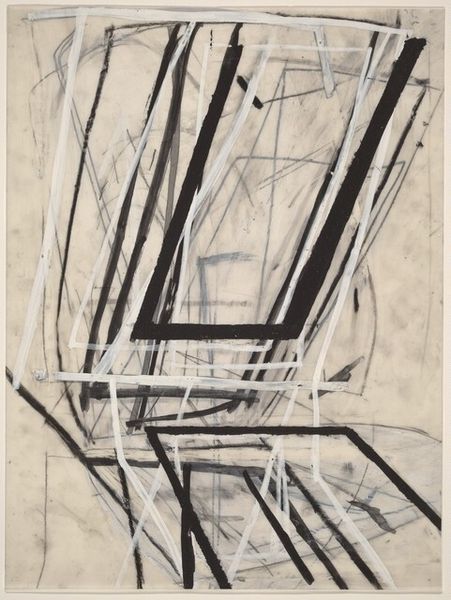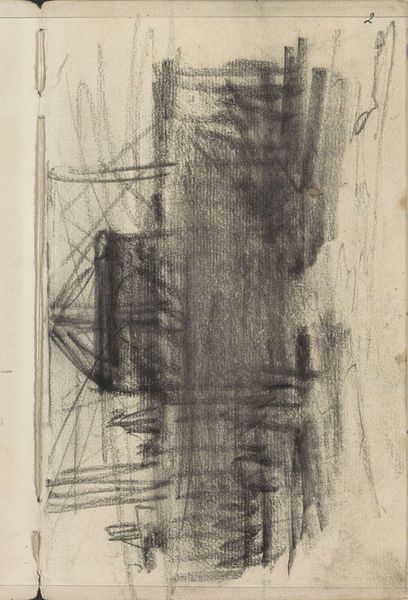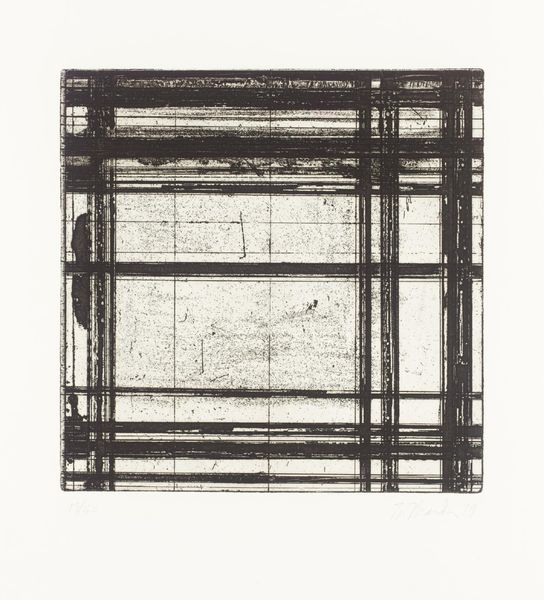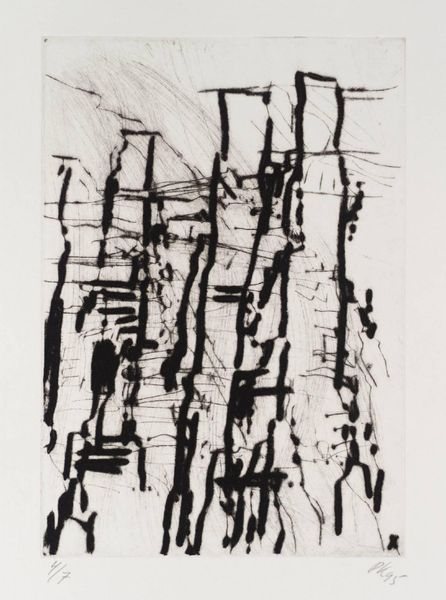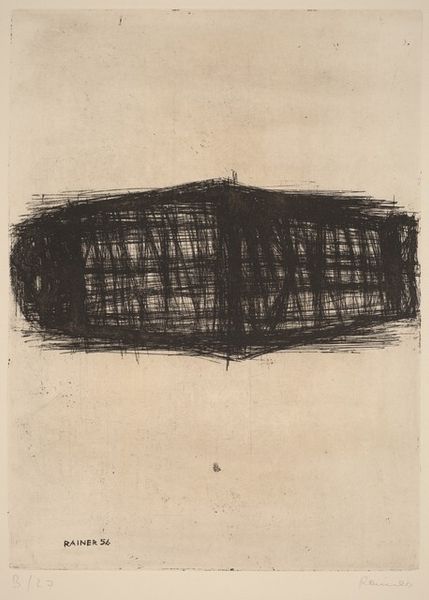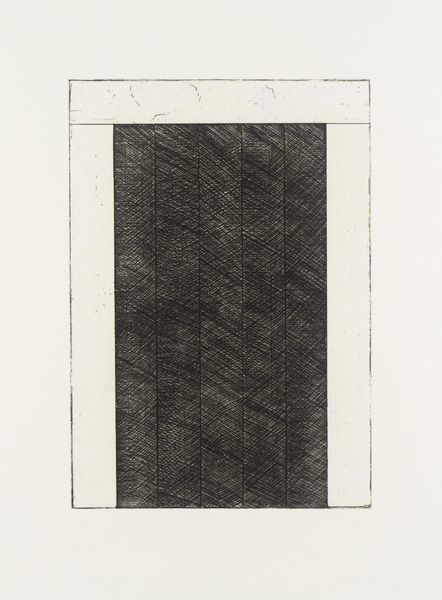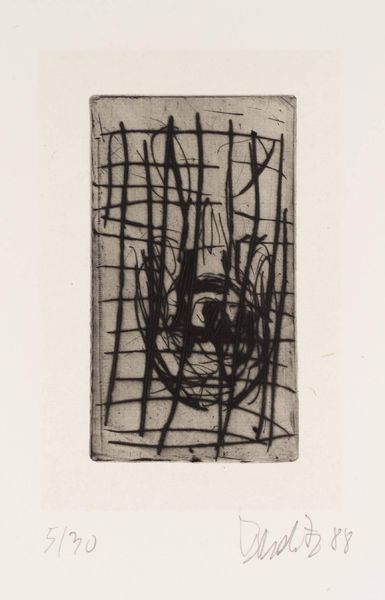
print, etching
#
abstract-expressionism
# print
#
etching
#
charcoal drawing
#
geometric
#
abstraction
#
line
Dimensions: sheet: 52.4 x 36.5 cm (20 5/8 x 14 3/8 in.) plate: 34.6 x 23.5 cm (13 5/8 x 9 1/4 in.)
Copyright: National Gallery of Art: CC0 1.0
Arnulf Rainer created this etching, titled 'Tabernacle', sometime in the late 20th century. Rainer, an Austrian artist, is best known for his "overpaintings," where he adds layers of paint to existing images or his own works, often blurring or obscuring the original subject. In ‘Tabernacle,’ we see this impulse towards obscuration in the dense network of lines that build up to suggest a structure. The tabernacle, traditionally a sacred place, is here rendered in a way that feels both solid and fragile. It resonates with the post-war anxiety and existential questioning that permeated much of European art at the time, in which the identity of traditional structures and beliefs were being interrogated. Rainer's work invites us to consider how we construct meaning and find solace in the face of uncertainty. What does it mean to create a sacred space through abstraction, and how does this reflect our personal and collective search for meaning?
Comments
No comments
Be the first to comment and join the conversation on the ultimate creative platform.
